1999.03.30 12:50
architects/philosophers?
I spent the better part of this last weekend reading extensively from three books: Theorizing a New Agenda for Architecture (1996), The Architect: Reconstructing Her Practice (1996), and Architecture of the Everyday (1997). Each book is an anthology, and, in the process, I read (so far) the texts of almost 20 architects/authors: Venturi, Scott Brown, Eisenman, Tschumi, Koolhaas, Rossi, Tafuri, Rowe, as well as Ingraham, Fausch, Ruddick, McLeod, Bennett and others. For the most part, I'd say that none of what I read was philosophy, but a lot of it was theory. Moreover, I feel secure believing the notion that architects (at least those that write) are very capable of relating theory through text (and here I want to distinguish that relating theory through the practice of designing and building is a whole other situation beyond what I am writing about here).
The primary reason for my doing all this reading is to come out of it with a greater understanding. So far, I fortunately understand most of what I've read, but, of course, that does not mean that I agree with all the theories. In fact, my agreeing or disagreeing with a theory is secondary to my thorough understanding of a theory. Overall, I want to be careful not to (pre)judge a given theory until I understand the theory--a practice, I fear, many architects do not engage in. For example, G. adds Holl, Tschumi, Hejduk, and Koolhaas as architects whose works intertwine heavily with philosophy. For me, this is not an accurate assessment because: Holl (in text and building) is not particularly theoretical or philosophical -- a good look at Le Corbusier's Ronchamp clarifies much of Holl's work; Tschumi is (ironically) a decent theorist especially when he writes about pleasure and its decadence relative to architecture; Hejduk is above all a poetic and artistic architect; and Koolhaas in his writings (which are very readable and easily comprehended) is insightfully observant in his scope of the current (global) situation of the built environment, and his buildings/designs well reflect "modernism" at one of its furthest points of evolution thus far.
If I were to offer any advise to architects regarding theory (and/or philosophy) it is that open-mindedness and understanding presents an extremely broad path of exploration and discovery, whereas close-mindedness is often a sign of small-mindedness. That said, I found the essays/theories within Architecture of the Everyday the most refreshing (and insightful and meaningful) of my recent readings. The essays within The Architect: Reconstructing Her Practice were also poignant, however, I must admit I am not yet in total understanding of all that is related therein. Finally, I found much within Theorizing a New Agenda for Architecture faded with age--many of the architectural theories from the latter part of the 20th century appear to be of their time, but not much beyond it.
2000.03.11
ideas
...this idea of elevating the Bye House over the Mayor's House with the ground plane of the Bye House (undulating) becoming the roof of the palazzo section of the Mayor's House.
...changing the wall of the Bye House into a digital terrain model, and turning the access bridge of the house into a meander.
| |
2000.07.03
death of John Hejduk
2000.09.25
ideas
3. mesh surfaces "bonded" via "walls", "towers", and "floors", etc., e.g., Hejduk architecture ideas; new typologies.
2000.11.14
Bye House Distorted
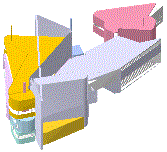
 2327
2327
2001.02.20
Museum Collecting -- ideas, collection
Altes Museum
Museum for Nordrhein-Westfalen
Wallraf Richartz Museum
Arts and Crafts Museum
House 10 (Hejduk)
Museum of Knowledge
Kimbell (barely)
Seroux's Histoire
Durand's Recueil
Denkmal plates
1880s engravings
Working Title Museum
Museum Annex
Acropolis Q
2001.05.29 08:41
Re: Lebbeus Woods 2
I'll now forever remember July 3rd 2000. The cold water hose running to my washing machine burst, and when I finally came to the basement there was a half inch of water almost everywhere. The next four hours were spent laying a dozen bath towels all over the floor to soak up the water. My hands were raw for several days afterwards from wringing out all those towels many times repeatedly. About a month later I learned that John Hejduk died on July 3rd 2000. I love the entirely chance associations that memory so often makes.
| |
2001.07.31
ideas
4. Lauf Haus der Kunst as further development of the Hejduk museum: House 10.
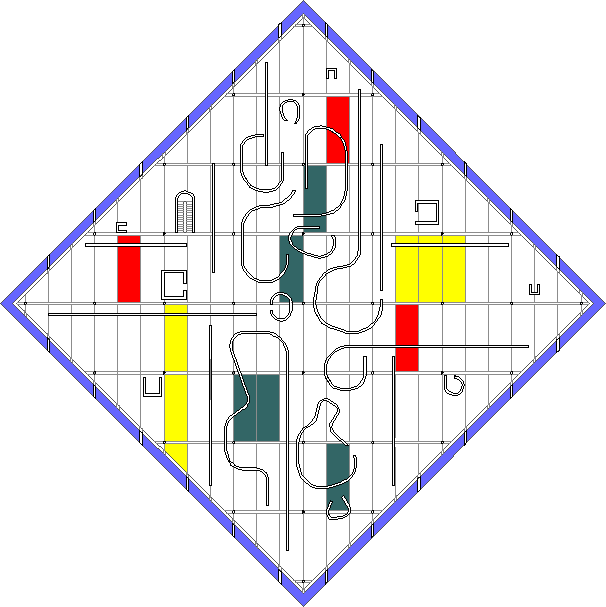
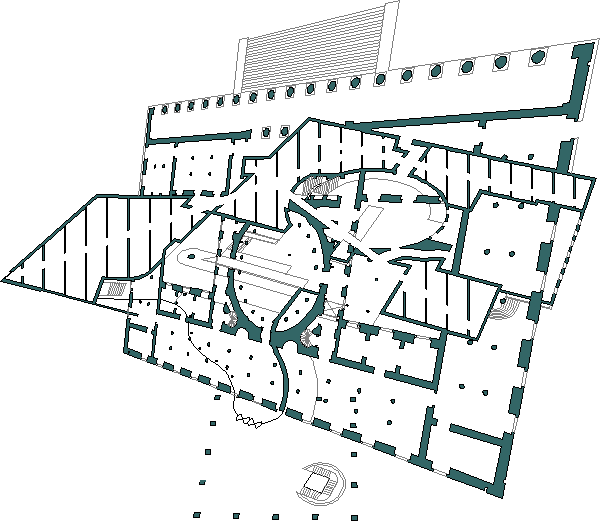
| |
2001.08.01
"Hejduking" Haus der Kunst
Lauf Haus der Kunst as a further development of the Hejduk House 10: Museum. This then opens the way to further "Hejduking" the design development of Lauf Haus der Kunst.
2001.08.08
Ottopian House I
2305d
Ludi Ichnographica
2002.06.16 15:23
houses that morph...
John Hejduk's Bye House has recently moved from being a virtual building (in this case 'paper' architecture) to an actual building now in the Netherlands, and in this 'morphing' process the built rendition was increased/morphed in scale by a factor of 1.2 (I think) for easier construction.
2002.09.21
Michael K. Hays, Sanctuaries, the last works of John Hejduk.
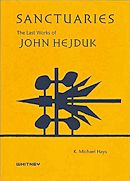
2003.05.28 11:20
Re: story telling
Piranesi very much utilized/executed a 'narrative' approach to design via the Ichnographia Campus Martius, which predates Cooper Union/Hejduk by about two centuries. Moreover, Piranesi's approach may well have been inspired/influenced by the mnemonic design methodology of Hadrian's Villa at Tivoli, which comes from 1900 years ago. Story telling/weaving/fabricating (like the above) is a very basic form of reenactionary architecturism.
Is reenactionary architecturism essentially an architecture that does not forget?
e2800b
2004.02.16 11:49
Re: Hedjuk
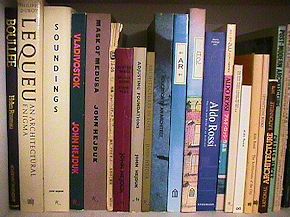
Boullée, Hejduk and Rossi make a very interesting combination. I never seriously thought of them in tandem before, but just now when I looked up at my bookshelf, the Boullée book is right next to the seven Hejduk books, which are right next to the eight Rossi books--who knew? I've seen two Rossi projects and one Hejduk project, all in Berlin. All three architects are now dead.
death of Rossi
death of Hejduk
Boullée was born 12 February 1728 and died 6 February 1799. Boullée never married.
Piranesi had some influence on Boullée, and Boullée had some influence on Gilly and subsequently Schinkel. Of the architects mentioned so far, all were prolific designers, but only Rossi and Schinkel were prolific in the built sense.
Hejduk's Bye House, now built in Holland at 1.2 the scale of the original design, has long been one of my favorite designs--I constructed a computer model of the project 1990 or 1991. I hadn't heard that it turned out to be 'uninhabitable'.
|